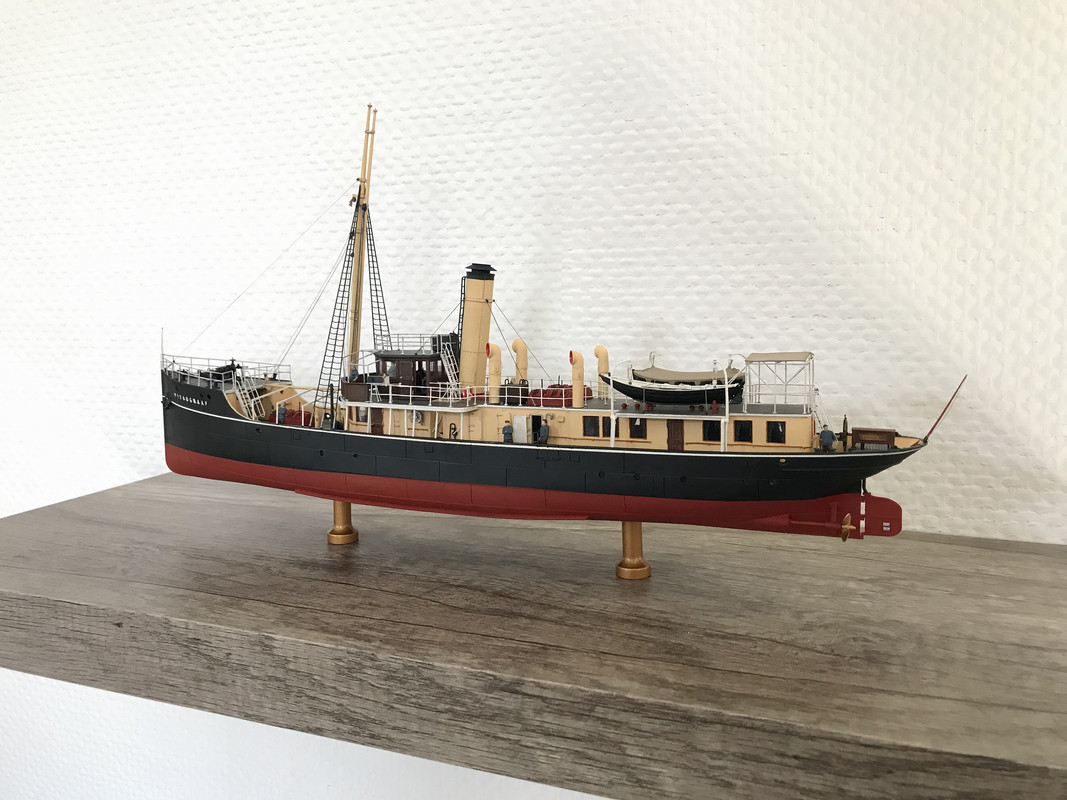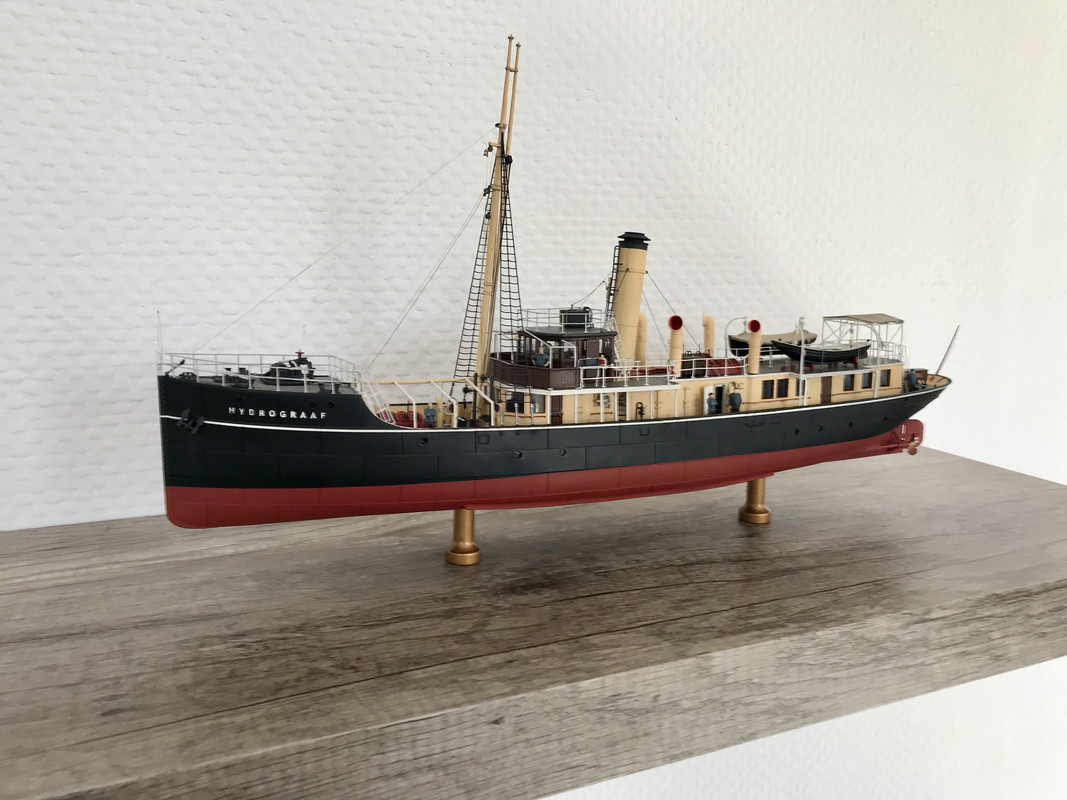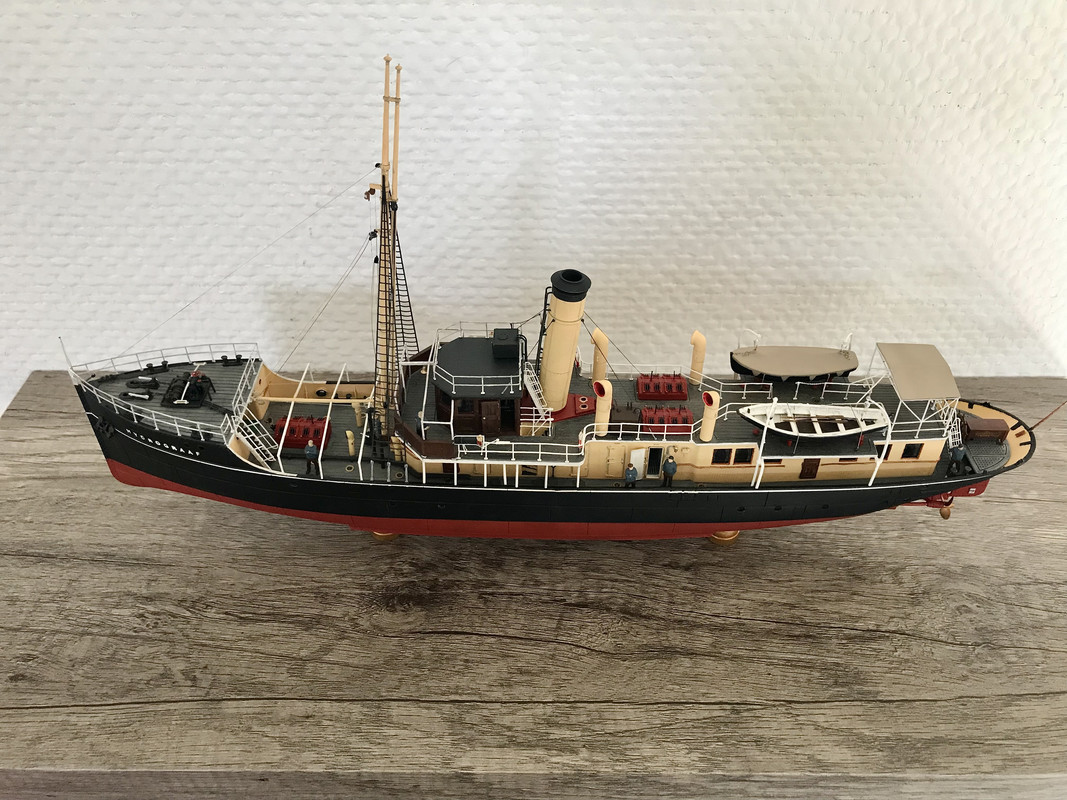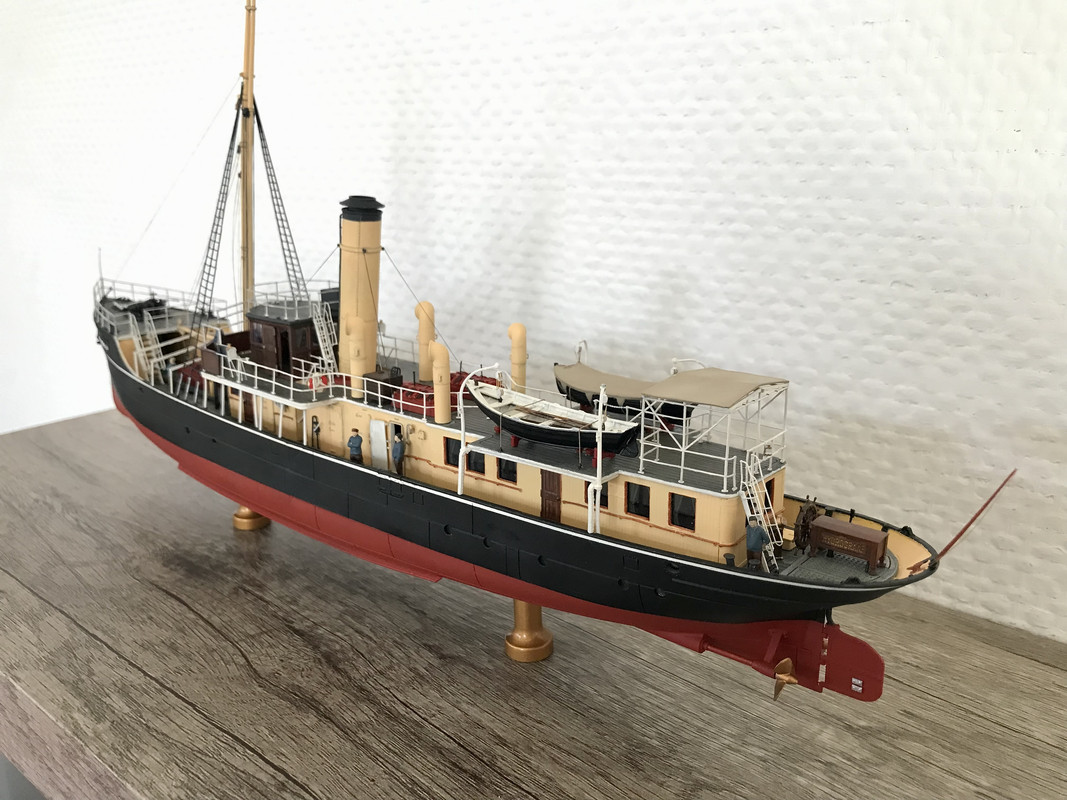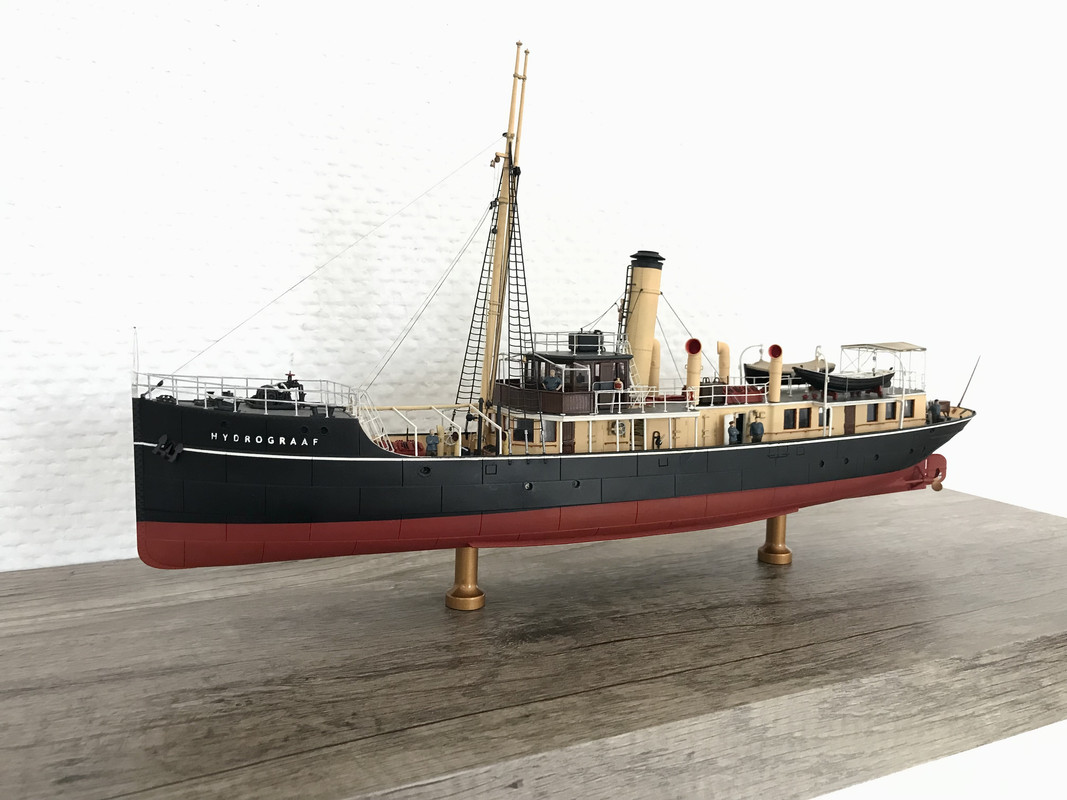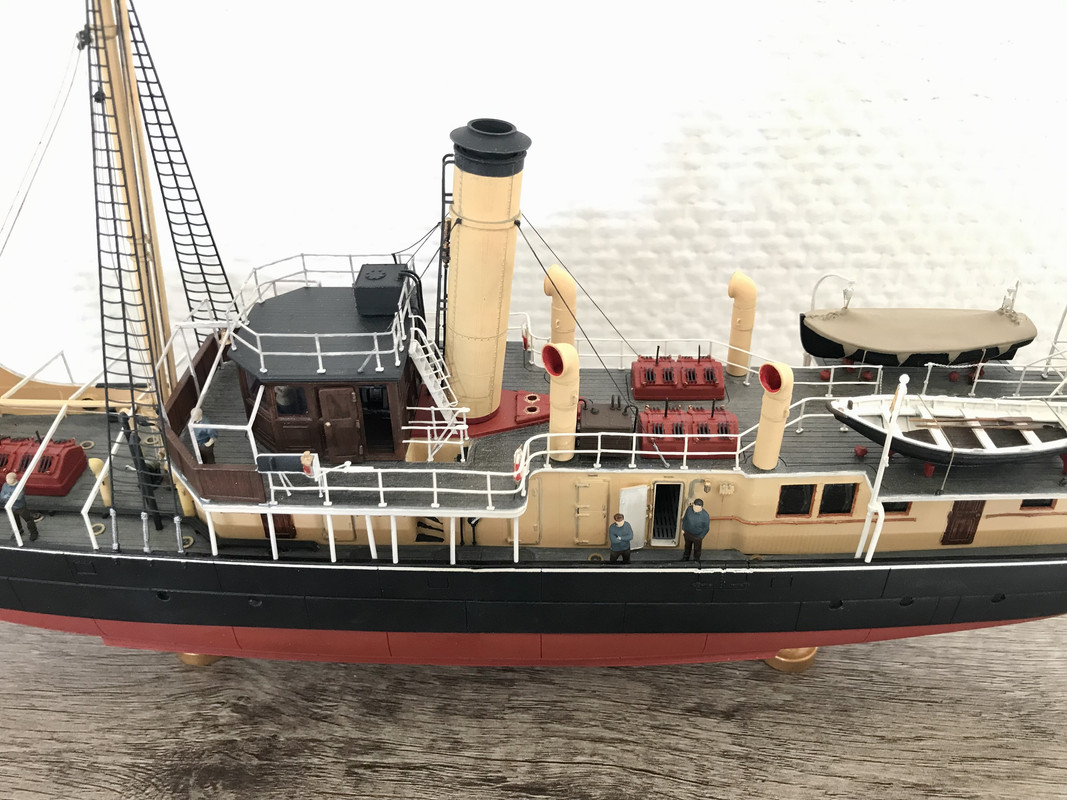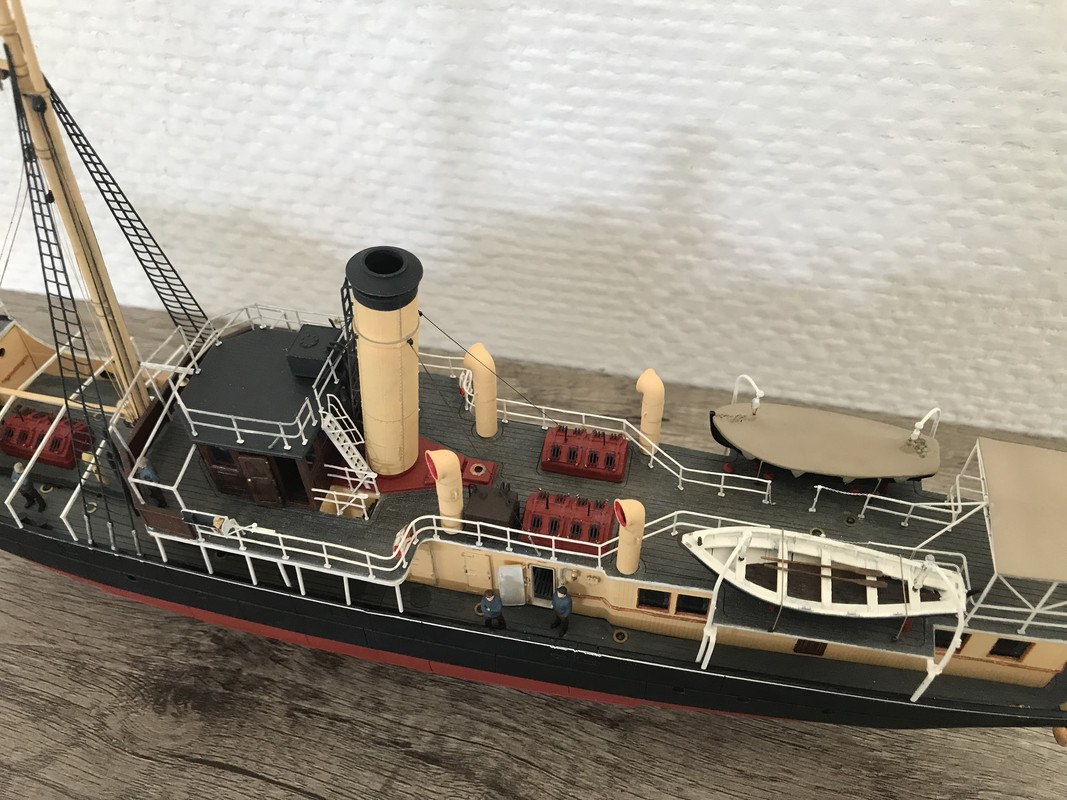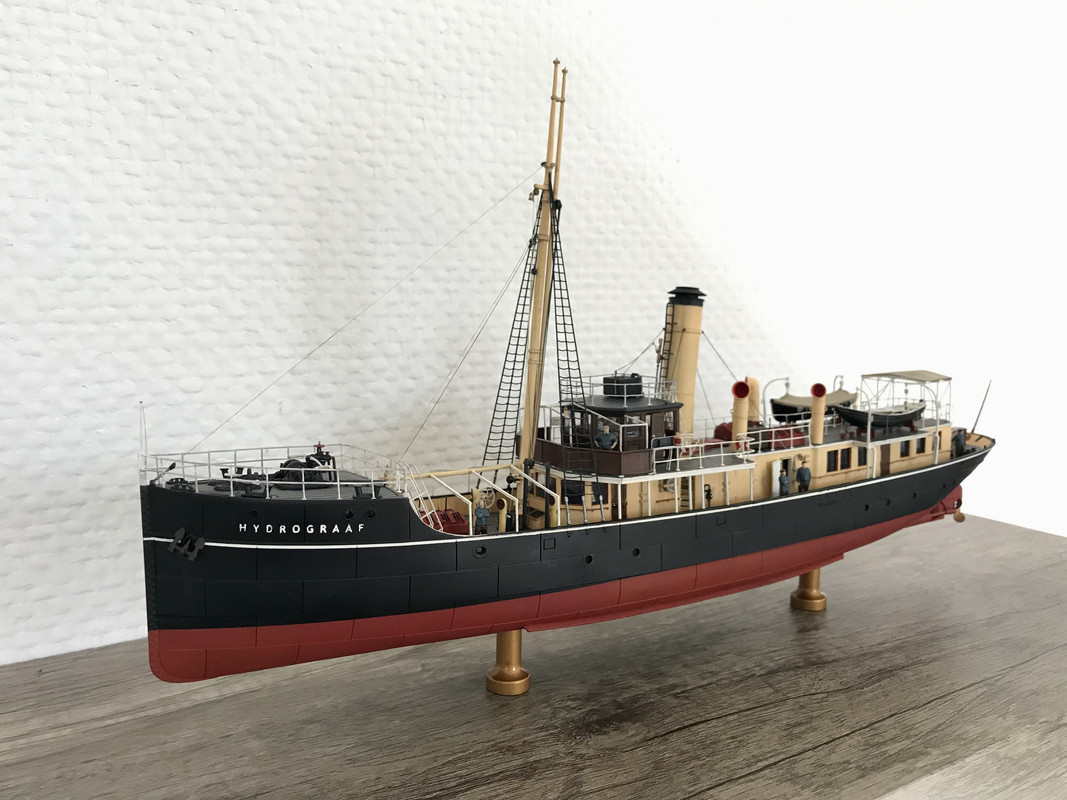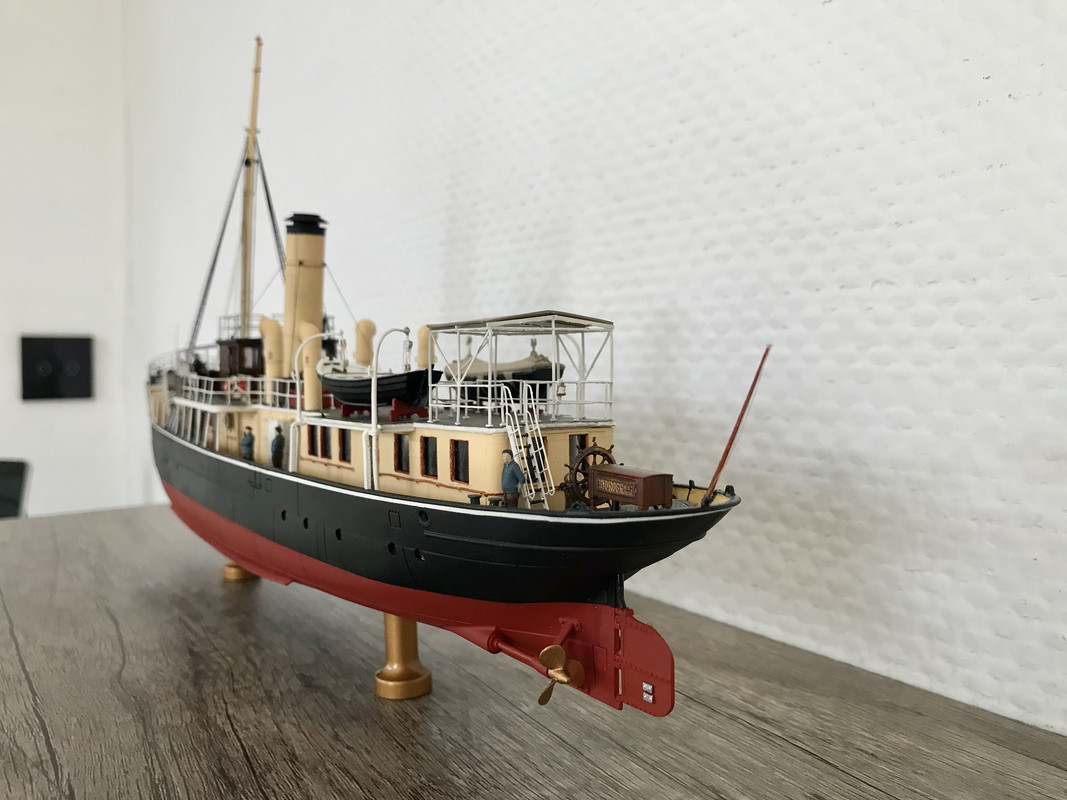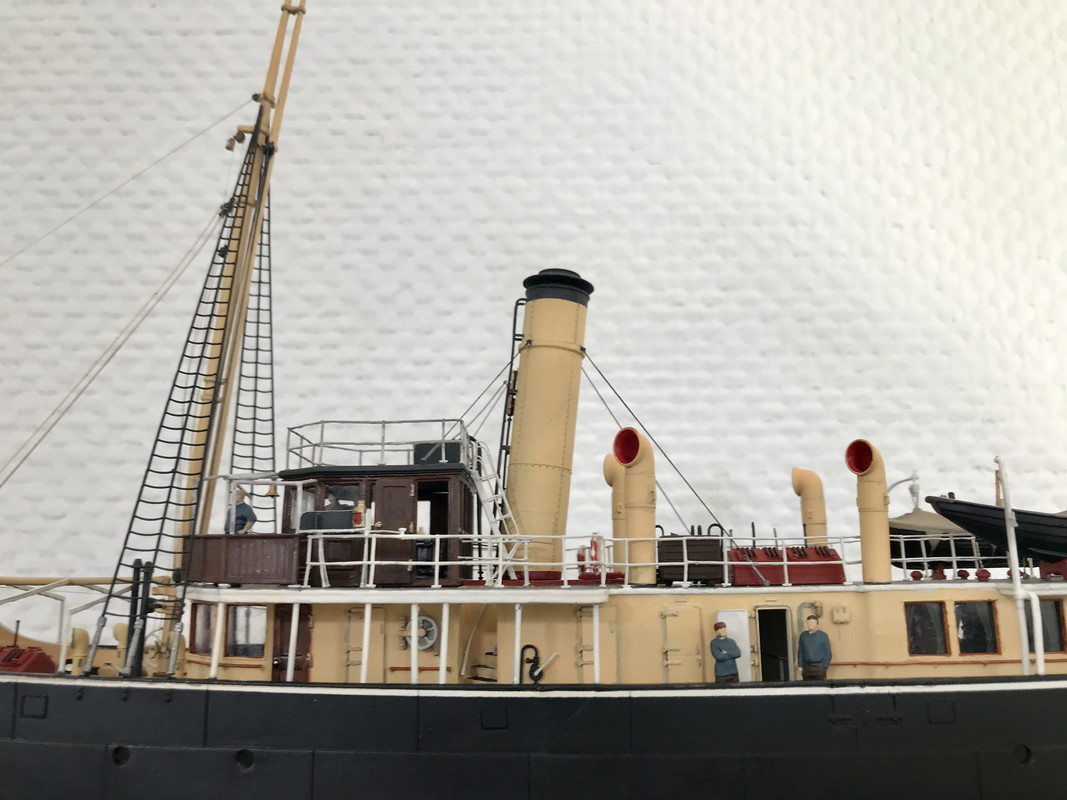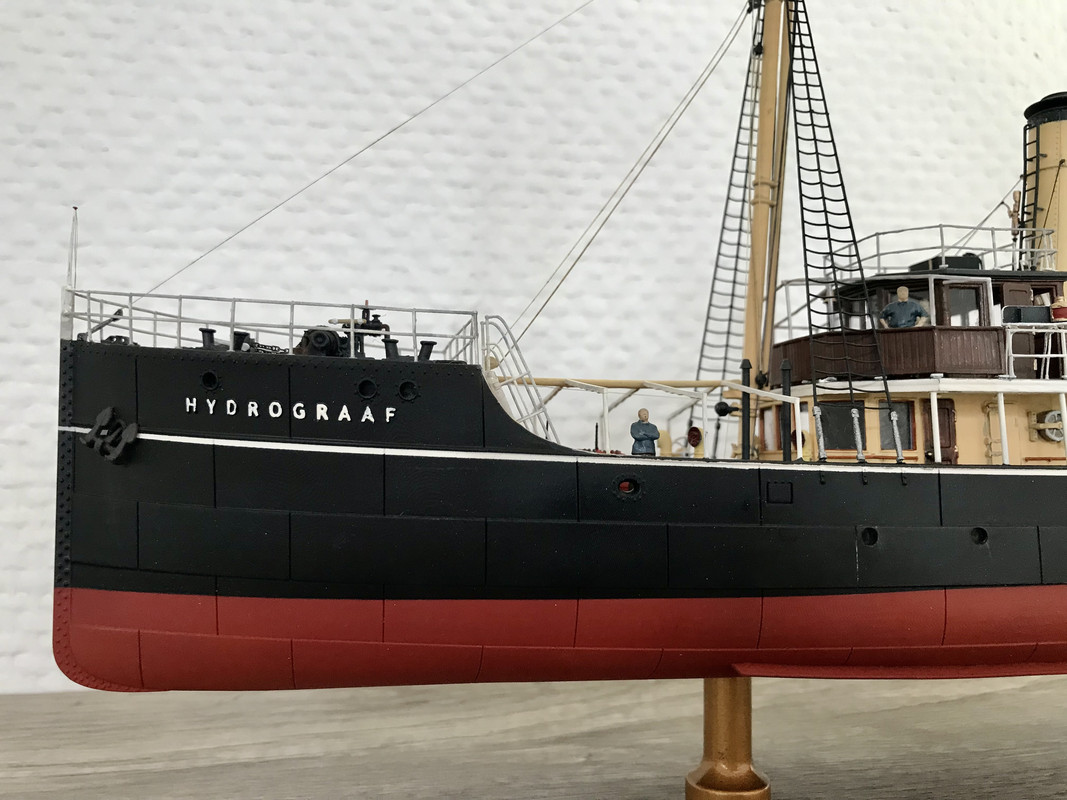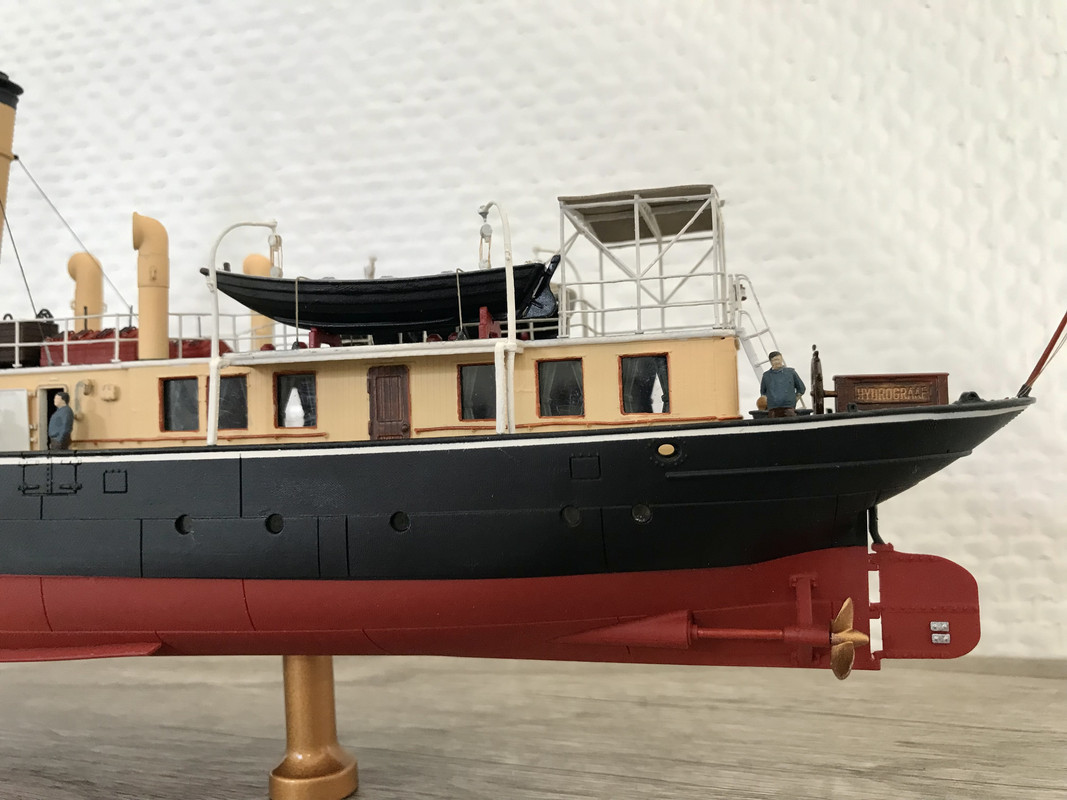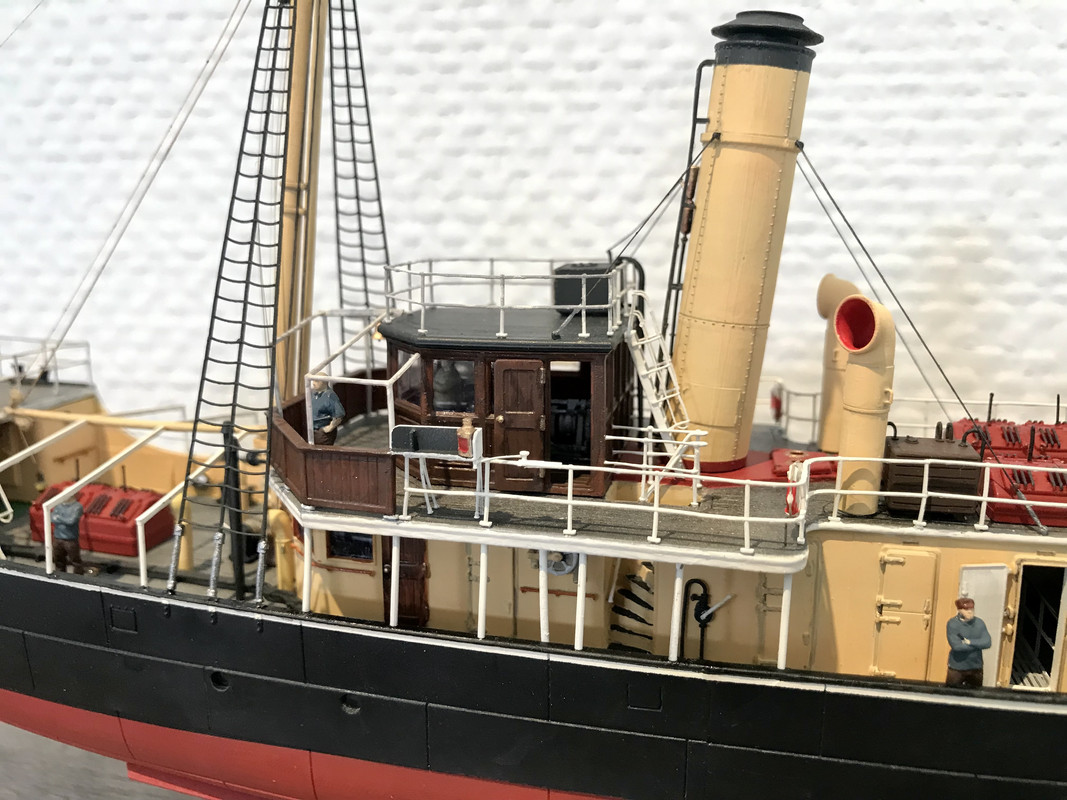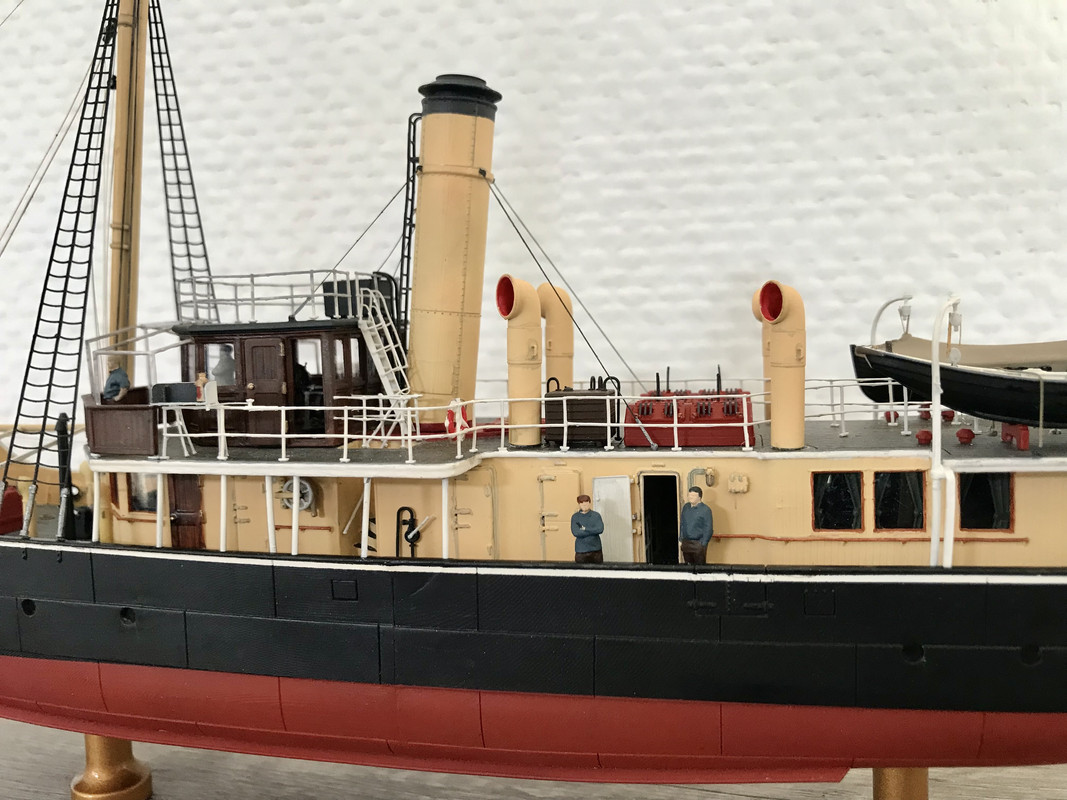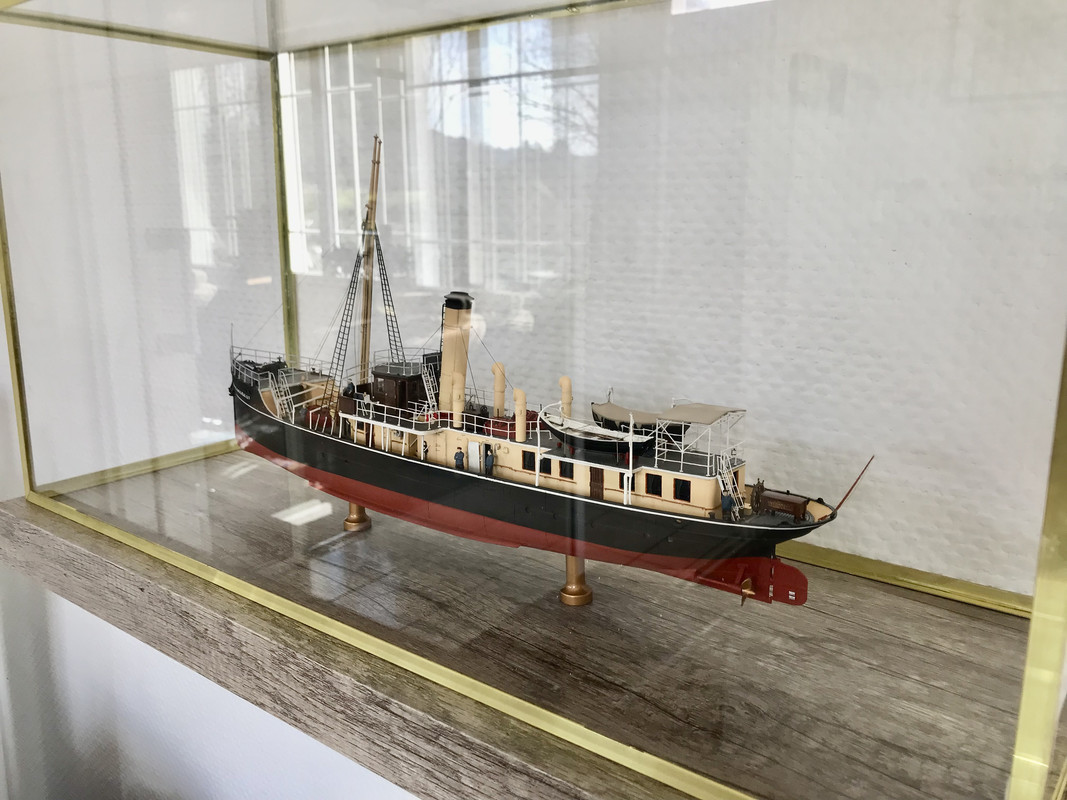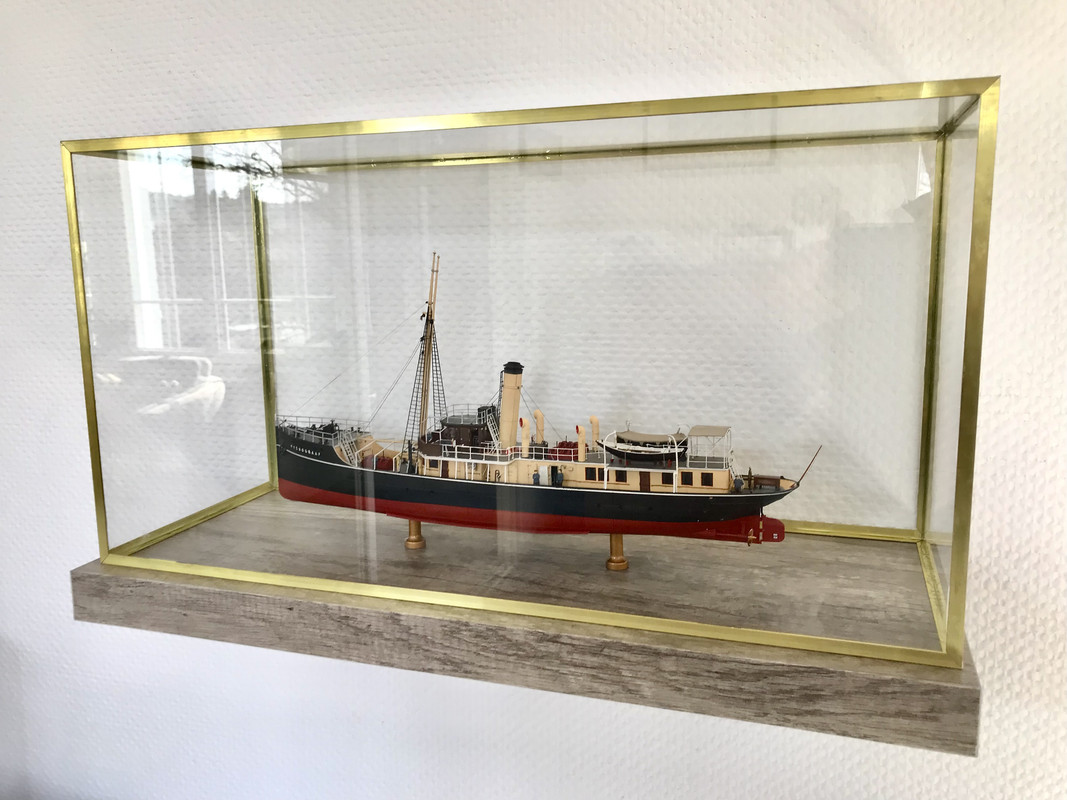SS Hydrograaf.
Hydrographic Ship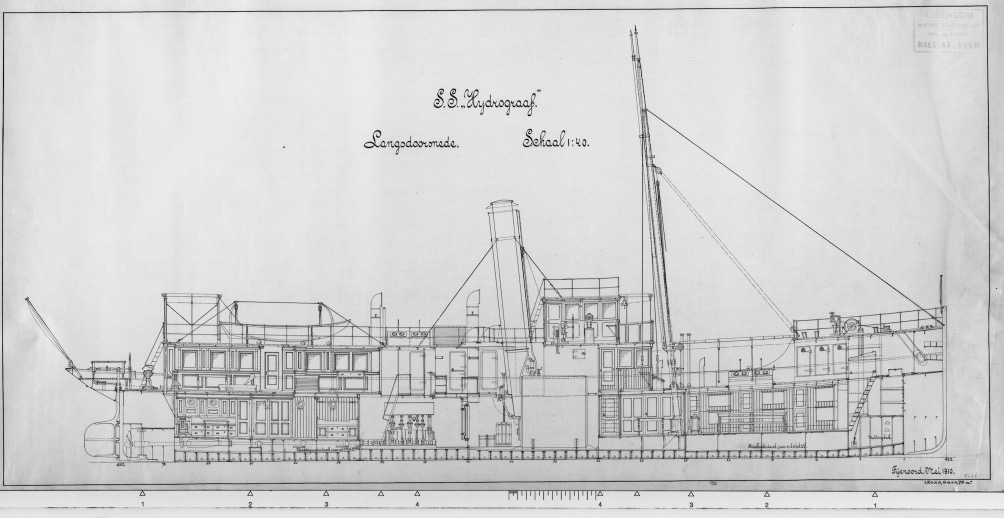

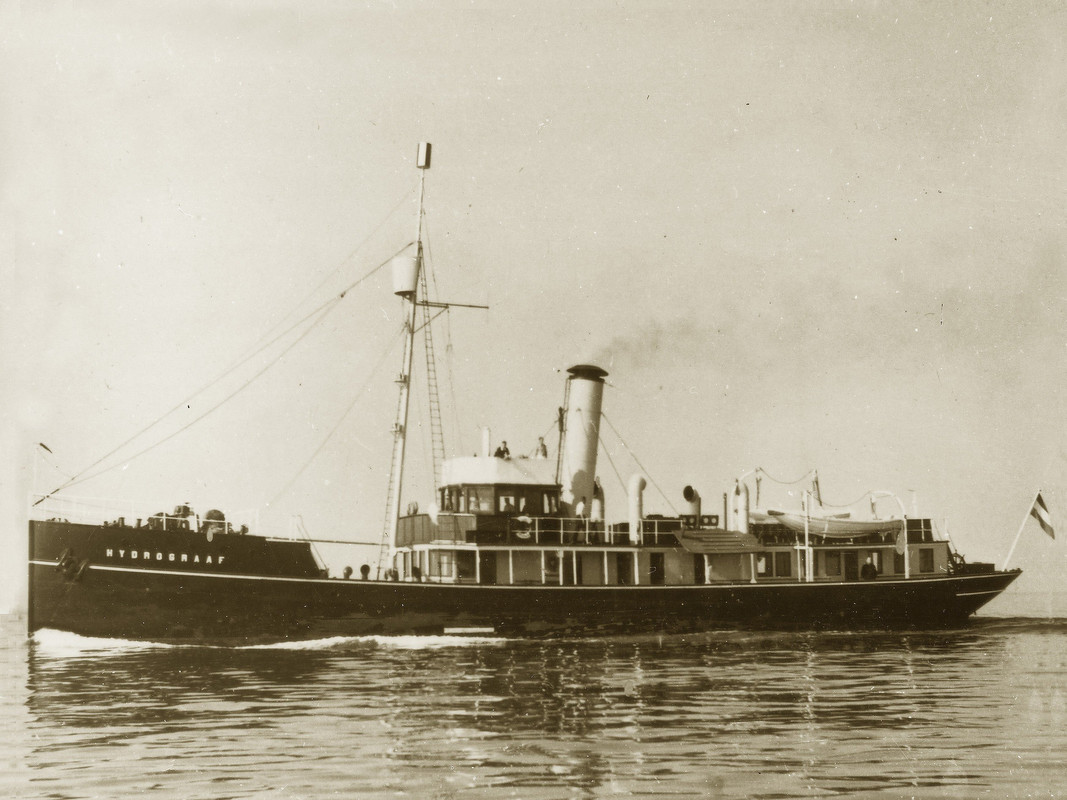
Shipyard: Fijenoord shipbuilding and engineering company in Rotterdam
Keel laying 11 October 1909
Launched 26 January 1910
Employed May 4, 1910
Out of service October 16, 1962
Active status
Home port Den Helder; 1985: Amsterdam
Owners:
Netherlands
Owner 1998 - Rederij de Hydrograaf BV Weesp
Charterer Dutch Glory
Previous owners 1910 Royal Netherlands Navy
1964 Sea Cadet Corps, Rotterdam
1985 The Sailing Museum Ship Foundation, Amsterdam
General characteristics
1910 Hydrographic ship
1985 Saloon boat
Length 40,5 meters
Width 6.70 meters
Draft 1,80 meters
Displacement 297 tons
Maximum passengers 200 (since 1985)
Propulsion and power 2 steam engines, two screws, 411 hp
1985 : 2 MAN diesel engines, 2 x 480 hp
Speed 10.5 knots
Port of Morlaix (29).

A little history:
The ship was built in 1909-1910 by the Scheeps-en Werktuigbouw Fijenoord in Rotterdam. The ship was launched on October 11, 1909 and launched on January 26, 1910.
As was customary at the time, it was a steamship equipped with two coal-fired steam engines. With a draft of only 1.80 meters, she was perfectly capable of operating in the shallow coastal waters of the southwestern Netherlands, the Zuiderzee and the Waddenzee.
On May 4, 1910, the Royal Navy commissioned the Hydrograaf . As a rule, the ship served as a depth survey vessel in a particular area from April to October. Outside this season, it was not possible to make bathymetric surveys because of the weather. The vessel was officially commissioned and decommissioned for each season. During the winter months, the ship usually stayed in Hellevoetsluis or Willemsoord, Den Helder . The ship did not sail in the gray colors of the navy, but had a black hull and a yellow superstructure. In 1921, the ship was reinforced by the Eilerts de Haan, built at the same yard.
The Hydrograaf was used several times as a royal yacht during visits of Queen Wilhelmina, Prince Hendrik and Princess Juliana in the waters of South Holland and Zeeland.
At the back, a cabin was set up for this purpose under the deck. During the royal visit to Zeeland in 1921, the royal party spent the night of September 15-16 on board the ship, which was moored in the port of Vlissingen.
In May 1940, the ship left Vlissingen for England. During the Second World War, it was used as an accommodation ship for the bomb disposal service. On 25 September 1943, the ship arrived in Harwich to serve as a depot ship. After the conquest of Zeeuws-Vlaanderen, the ship came to the disposal of the commander in Zeeland in October 1944. She immediately served again as a survey ship to better map the important access to the port of Antwerp. After the war, the ship returned to the service of the Hydrographic Service. As such, she was taken out of service by the Royal Navy on October 16, 1962 and replaced by the modern ship Zeefakkel. She was the last coal-fired steamer of the Royal Navy.
From August 30 to September 8, 2006, the Hydrograaf was used as a stage for the theatrical show about the sinking of the Titanic, one of the open-air shows of the Zeeland Nazomer Festival . The audience was taken on a journey through Zeeland's waters from various ports, during which the story of the sinking of the Titanic was told as a metaphor for the decline of Western civilization during a tour of the ship.
Wiki.
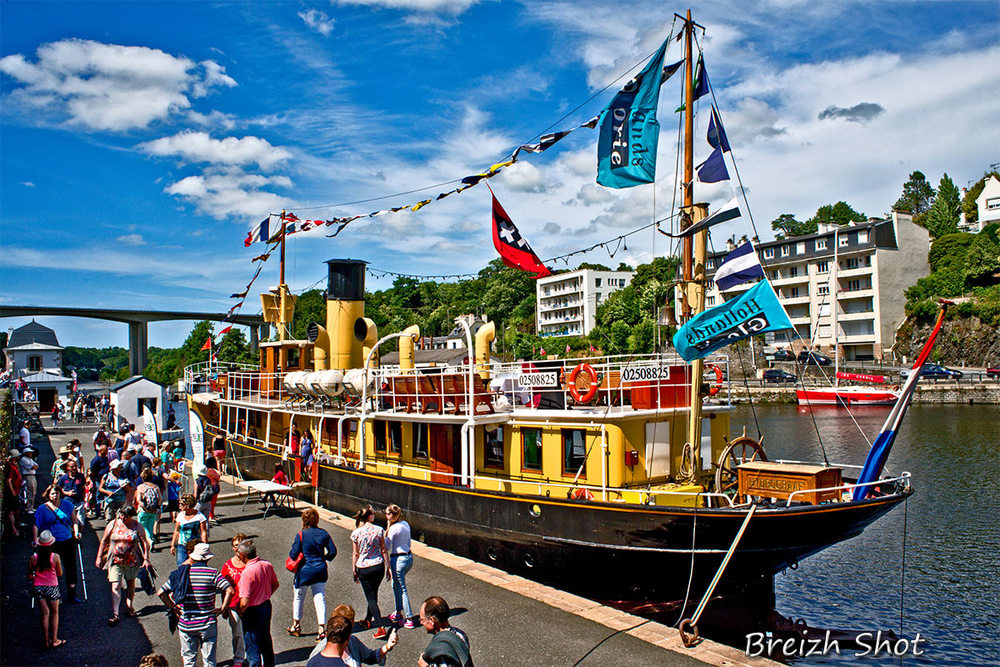
This ship always comes to France, in summer, during the various national maritime festivals, like "Tonnerre de Brest", La semaine du Golf du Morbihan, Terre et Mer etc.
Thanks to Roland for finding me the necessary plans to draw the hull in 3D.
At 1/100 the ship is 40,5 cm long overall.
A nice ship never reproduced in plastic to my knowledge at this size, there is a paper/cardboard version.
Thanks to Bromure, Roland, Maarten Schönfeld for their precious help and to those who followed the project and encouraged me:
viewtopic.php?f=13&t=329319It is shown as on the original plan.
